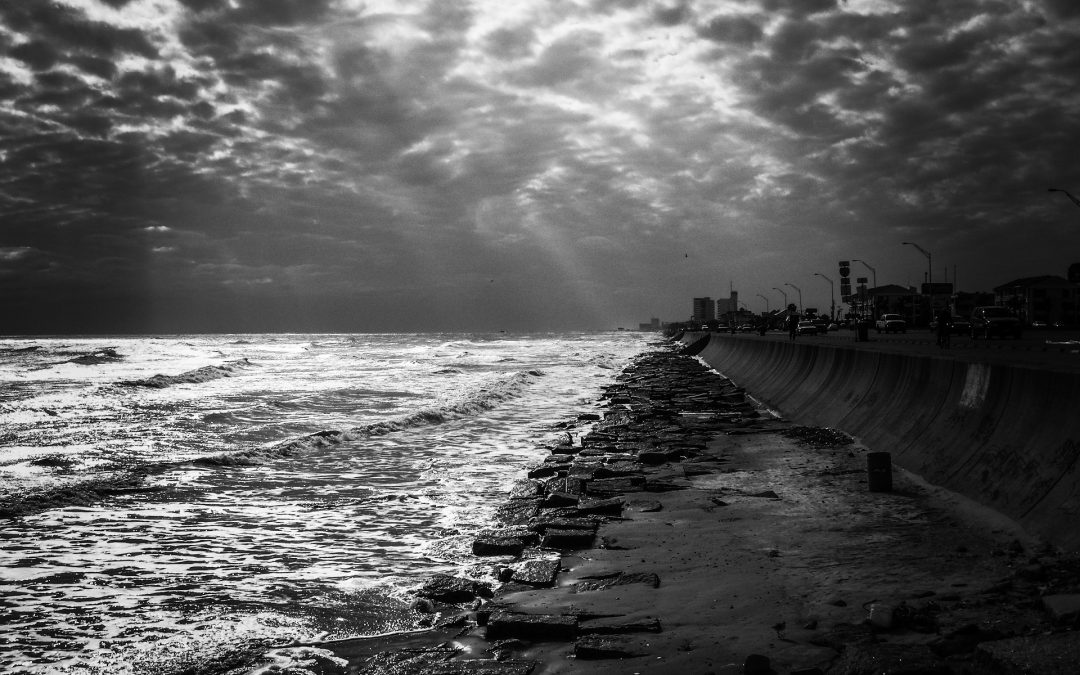Lessons from Hurricane Harvey and Seth Godin that every business owner must learn.
Sunday morning, after reading a few social media updates on Hurricane Harvey and checking the news sites, I was relieved to see that the friends I have in or near the path of the storm are doing okay. Others are not so lucky.
Continue to keep those people in your prayers and thoughts as this storm will touch many, many lives.
As I was catching up on emails from the past couple of days, a new one from Seth Godin arrived that has some parallel concepts that I want to share with you.
The concepts are about preparing for or anticipating disasters. Some are out of our control, while others we have more control than we realize.
Regarding the hurricane, there is nothing humanly possible that could have prevented the storm. However there were warnings, days ahead of the storms arrival. During those days, people had choices to make. Stay put or leave where the basic choices.
What to do with your stuff was another. Some people have the ability to leave and take their stuff, others at the opposite end, were stranded and lost everything. Nearly everyone was somewhere in between due to choices they made. Choices that they made years earlier or in the days and hours before the storm hit.
“Gone, In An Instant, All Gone”, was the reaction from someone who decided to ride the storm out only to see everything get swept away but managed to stay safe. They decided to rely on insurance to rebuild their lives.
Seth’s article talks about the power of Word Of Mouth and your business reputation that can also be, “Gone, In An Instant, All Gone”, under toxic circumstances. And those circumstances in many cases are preventable.
Quoting Seth:
Anyone who has done the math will tell you that word of mouth is the most efficient way to gain trust, spread the word and grow.
And yet…
It only takes a moment to destroy. Only a few sentences, a heartless broken promise, a lack of empathy, and it’s gone. Not only that, but the lost connection can easily lead to lawsuits.
Doctor, the surgery seems to have gone wrong!
It’s not my fault. I did a perfect job. Tough luck.
Architect, the floor is sagging, the beams were put in the wrong direction!
I don’t care. There’s a three-year statute of limitations, and even then, it wasn’t my job to ensure that the work met the plans.
Airline, my two-year-old can’t sit in a row by herself, and the agent on the phone said you’d work it so we could sit together!
It’s not my fault. If you don’t want to get on the plane, don’t get on the plane.
We’ve seen how these scenarios have gone viral because of the power of the social side of the internet. Everyone has a voice. Word of mouth can spread like a devastating hurricane. It can destroy your business.
But like the weather forecasters who were able to tell people to prepare before the storm hit, I’m here to help you recognize the warning signs that too many business people either don’t see or they choose to ignore. 
Here’s more from Seth:
In all three cases, there are significant operational barriers to magically fixing the problem. But that’s not where the breakdown happened. It happened because a human being decided to not care. Not care and not express anything that felt like caring.
A human being, perhaps intimidated by lawyers, or tired after a hard day, or the victim of a bureaucracy (all valid reasons) then made the stupid decision to not care.
Ms/Mr business owner: advertising and marketing can not fix your business if you have policies in place that are making it difficult for customers to be your customer.
Often, it’s not a viral social media post that drives people away. It is more like a slow leaky tire. A slow dripping faucet. Something not irritating to you perhaps but something that takes away from your business success.
If it is a policy, then change it. Empower your people to override the “set in stone, no exceptions” policy when it makes sense to show that you really care about your customers.
If it is a person that has a bad attitude, move them to a position that will improve their attitude. Not everyone should be on the front lines interacting with your customers.
And if all else fails, have the courage to “un-hire” that person. As one friend of mine puts it, “we’re going to allow them to pursue excellence elsewhere.”
One last bit of wisdom from Seth’s article:
It turns out that while people like to have their problems fixed, what they most want is to be seen and to be cared about.
Of course you should use these fraught moments to reinforce connections and build word of mouth. Of course you should realize that in fact people like us get asked to recommend airlines and doctors and architects all the time, but now, we will never ever recommend you to anyone, in fact, we’ll go out of our way to keep people from choosing you.
But the real reason you should extend yourself in these moments when it all falls apart is that this is how you will measure yourself over time. What did you do when you had a chance to connect and to care?
I call this the disaster recovery operation. All people screw up. It’s how we handle those times that make a difference between, “Gone, In An Instant, All Gone” and “New and Improved”.
Are you ready?
P.S.
Right after I wrote this story while sitting in my favorite coffee shop I glanced up and saw a line of 20+ people waiting to place their orders. This could have gone incredibly wrong as coffee shops are not known for speedy service. But what caught my attention was the barista who called out to the customers waiting, thanking them for stopping in and asking them how their day was going. While it didn’t make the line move faster, it helped the people waiting feel valued. To quote her, “I want to give a special shout out to all of you who are patiently waiting in line. You are the ones that make this a great place every day.”

